Ever wondered what the fastest snakes in the world are? You’re in the right place! We’ll talk about the world’s fastest moving, striking, and killing snakes.
Silent and fierce, these fast snakes are among the quickest animals in the world.
With speed so high the human eye can’t follow some of their movements, these vipers are hands-down some of the most interesting animals on the planet! Let’s get to them.
Fastest Moving Snakes
Have you ever wondered, “how fast can a snake move?” Here are the world’s fastest snakes:
Yellow-Bellied Sea Snake (Hydrophis platurus) – fastest swimming and diving snake
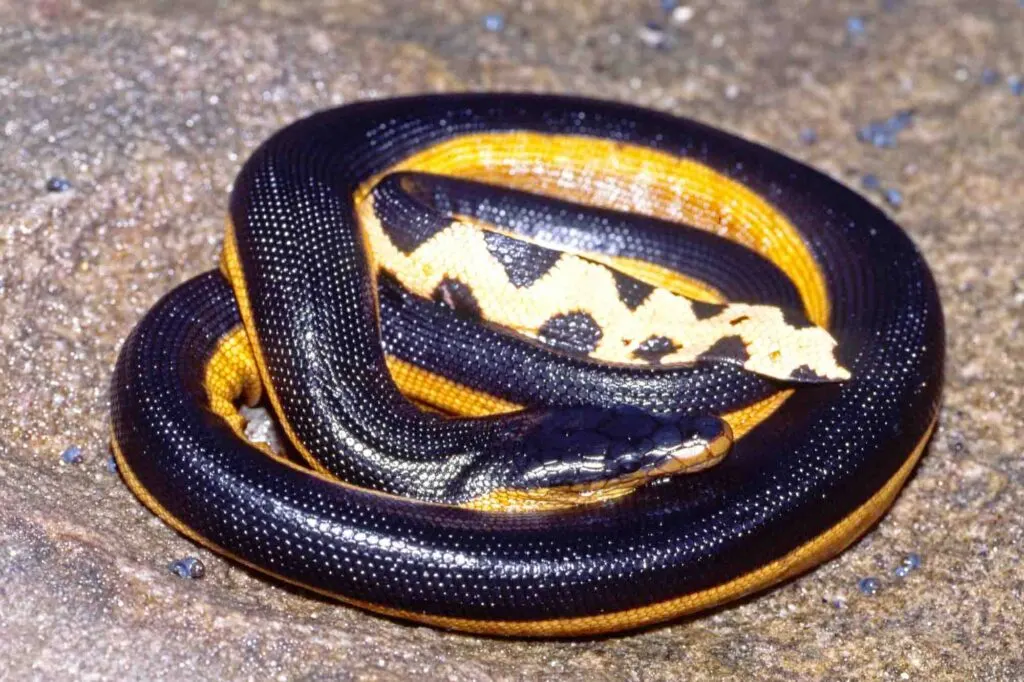
- Yellow-bellied sea snake speed: 2.04 mph
The yellow-bellied sea snake is also known as Hydrophis platurus.
Those interesting creatures spend the entirety of their existence under the water and are unable to move or stand upright on land.
The species has numerous unusual adaptations that are very helpful in surviving underwater. They truly deserve to be on the list of fastest snakes in the world.
When the yellow-bellied sea snakes spot the swimming prey, they freeze and stay quiet, waiting for the perfect moment.
Then, with their startling speed would strike at the victim, utilizing the venom to subdue it. Instead of single fish, these snakes are more likely to attack large schools of fish. This guarantees that they make the most of their quest.
Those snakes are the fastest snakes in the world in swimming and diving among all.
The paddle-shaped tail of the yellow-bellied sea snake is used to propel its entire body back and forth as it glides in the water, and all that gives the possibility to move backward and forwards.
Wondering how fast is a snake underwater? Those amazing creatures can move around in the water at a pace of roughly 2.04 mph.
Read next: Fastest Land Animals in the World
Southern Black Racer (Coluber constrictor priapus)
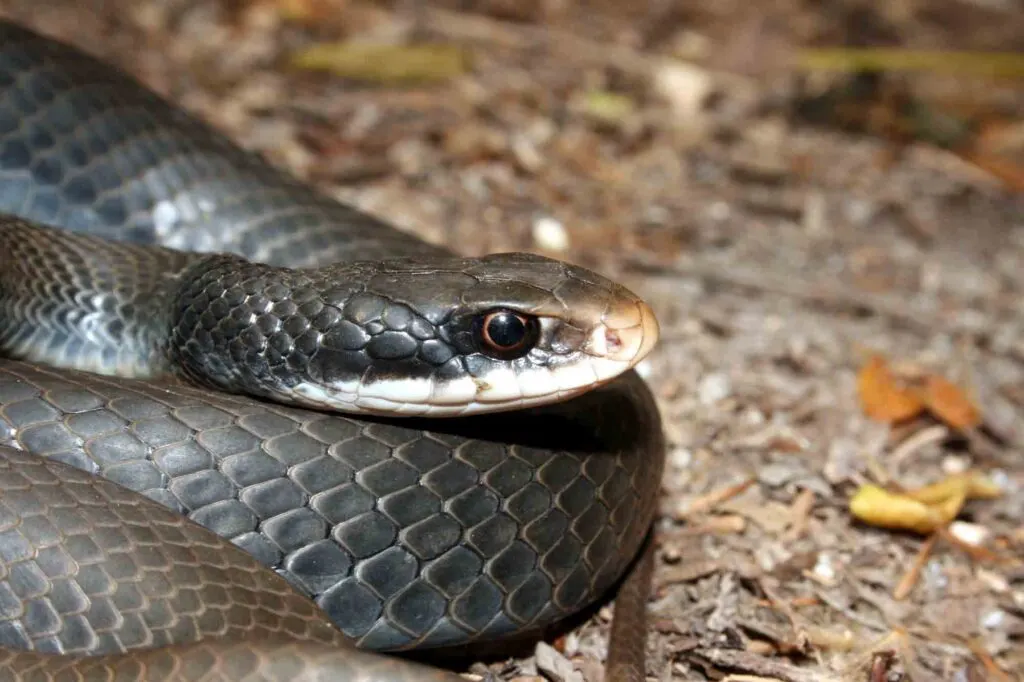
- Southern black racer speed: 9.94 mph
Coluber constrictor priapus, known as the southern black racer, is native to USA and Mexico.
Although these snakes are not venomous, they are characterized by a very high-speed movement to avoid predators and other dangers.
Even though it is referred to as a constrictor, unlike other constrictors, it does not kill its prey by coiling around it but by suffocating or crushing it into the ground.
They devour lizards, bird eggs, birds, and rodents since they are carnivores. To check out the surroundings, those snakes can lift their head and lengthy neck several inches off the ground.
It’s common to witness this snake moving around through suburban areas or crossing streets. They make every effort to flee as soon as a person spots them.
Unfortunately, vehicles and trucks frequently drive over and kill these snakes. Although they move quickly, they sometimes struggle to avoid passing vehicles.
The racer snake, which may grow to a maximum length of 2-5 feet, has a light body that enables it to seek prey at speeds of up to 9.94 mph.
Therefore, this particular one truly is worthy of being on the list of fastest snakes in the world.
The southern black racer, in contrast to many snakes, feels at ease in the water and is capable of reaching great speeds there as well.
Black Mamba (Dendroaspis polylepis)
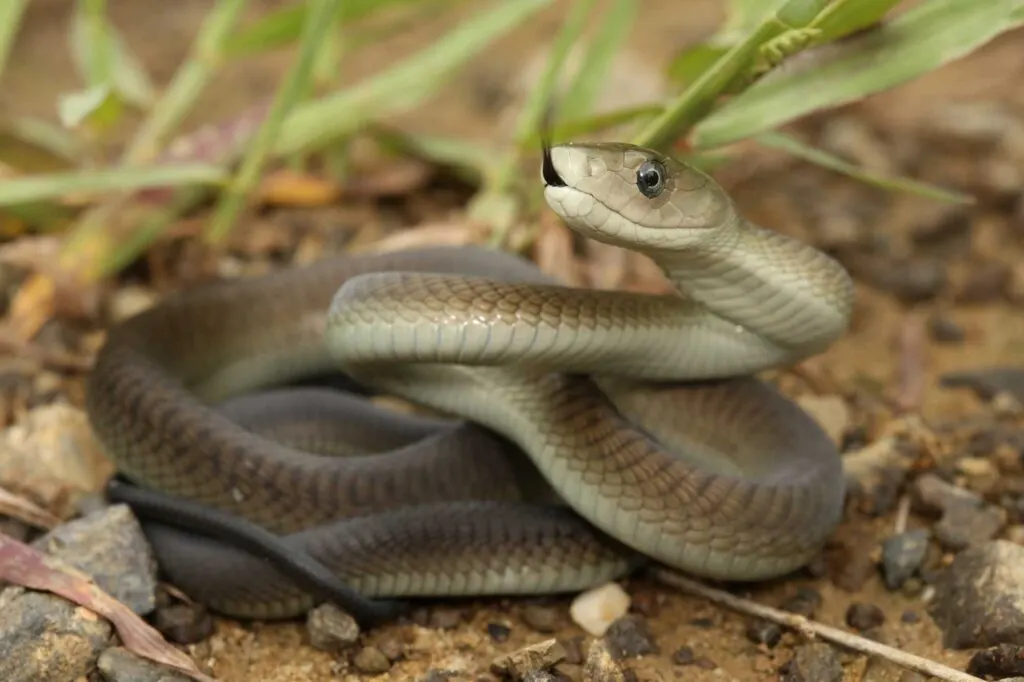
- Black mamba speed: 11.8 mph
The black mamba is one of the fastest snakes in the world and is native to Africa and can be found from South Africa to South Sudan.
Those aggressive snakes prefer to live in arid areas that are covered in bushes. As one of the most dangerous snakes in the world, it’s not a surprise that this snake is also one of the most dangerous animals in Africa. The black mamba uses its speed to seize prey and inject a very lethal venom.
Despite frequently being considered the quickest snake in the world, the sidewinder actually comes in first, but on that below.
The black mamba is one of the most feared African snakes because of its high speed, threatful venom, and aggressive demeanor. It is also one of the most hazardous creatures out there.
Like other snakes, the mamba will want to avoid conflict with people, but if forced into a corner, they are more than willing to defend themselves and engage in combat.
How fast is the black mamba? Well, this deadly snake can reach rowing up to 13 feet long.
The fastest black mamba speed is around 11.8 miles per hour across open terrain. The black mamba, like the sidewinder, moves in an ‘S’ form while using lateral undulation to push off things in its path and build velocity.
Horned Rattlesnake (Crotalus cerastes) – fastest moving snake in the world
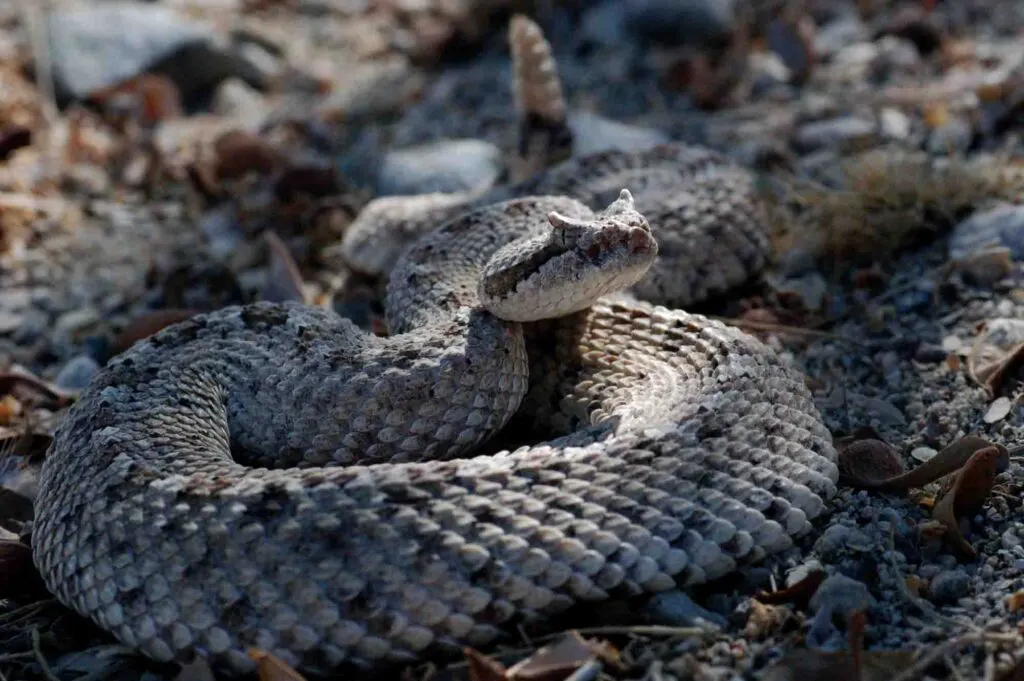
- Horned rattlesnake speed: 18 mph
The horned rattlesnake is a tiny venomous snake that is characterized by a “sidewinding” technique of crawling, which is why they are called sidewinder snakes.
One of the most unique facts about those snakes is that they can move at high to 18 mph. Therefore, it makes the fastest snakes in the world.
Horned rattlesnakes love dry and hot climates, therefore, they are native to the desert region of the USA and northern Mexico.
Rough scales are one adaptation that helps sidewinders thrive in their arid environment. They can travel through the scorching sand in an S-motion without getting burned, thanks to their scales.
As for the visual side, those little snakes have small horns located above each eye, probably to prevent sand from obstructing the eyes while the snake is buried.
Adults can reach 30 inches in length, although their normal body length is a little over 20 inches.
Fastest Striking Snakes
Striking is the sudden movement and attack that most creatures, especially snakes, are characterized to do when seeing either the prey or when feeling threatened.
Snakes are typically seen as being calm, relaxed reptiles. However, there are certain extremely particular circumstances in which they could attack and stroke.
Hunger is the primary cause, although other factors like fear, stress, or disease may also be to blame.
When the snake strikes, it often bites its prey, and the venom from its glands moves into the blood of the prey. Have you ever wondered how fast snakes are when they strike? Let’s find out.
Texas Rat Snake (Pantherophis obsoletus lindheimeri)
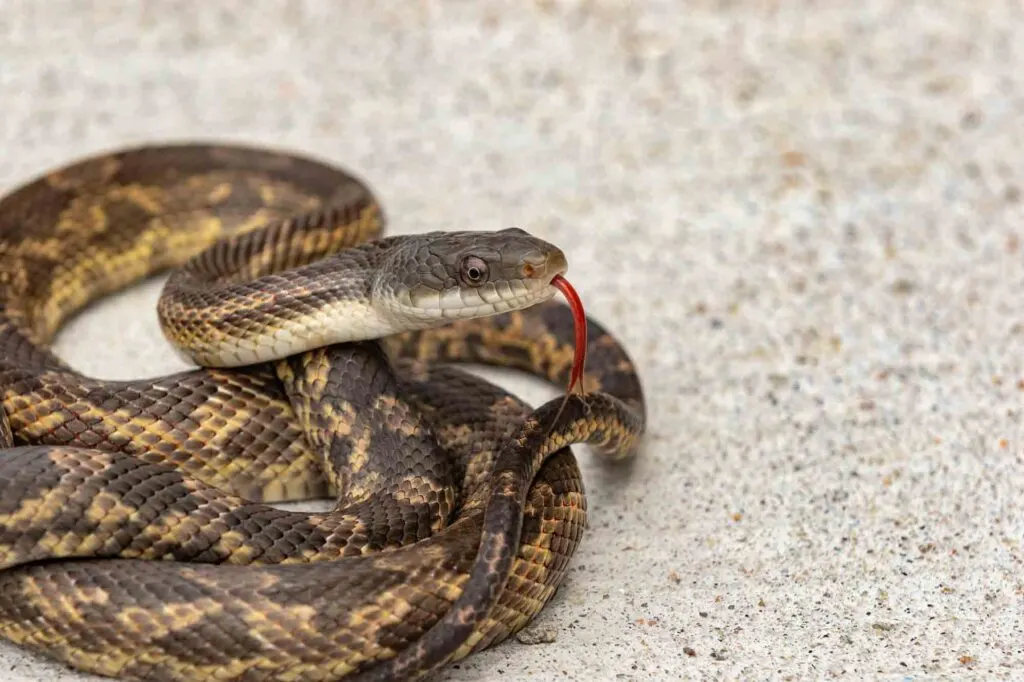
- Texas rat snake speed: 5.97 mph
Even though they are not venomous snake species, Texas rat snakes are among the fastest striking snakes in the world and can attack with a speed of 5.97mph. As you would guess, they are native to the Southern USA.
They seek their target, attack, bite, and constrict, yet they do not emit venom.
When around people, these snakes might get a little protective. Some individuals will also attempt to bite when startled, but the majority would rather flee and hide.
In an effort to deceive any prospective predators, they have the capacity to vibrate their tails to simulate the much more lethal rattlesnake.
Western Diamondback Rattlesnake (Crotalus atrox) – second-longest venomous snake in North America
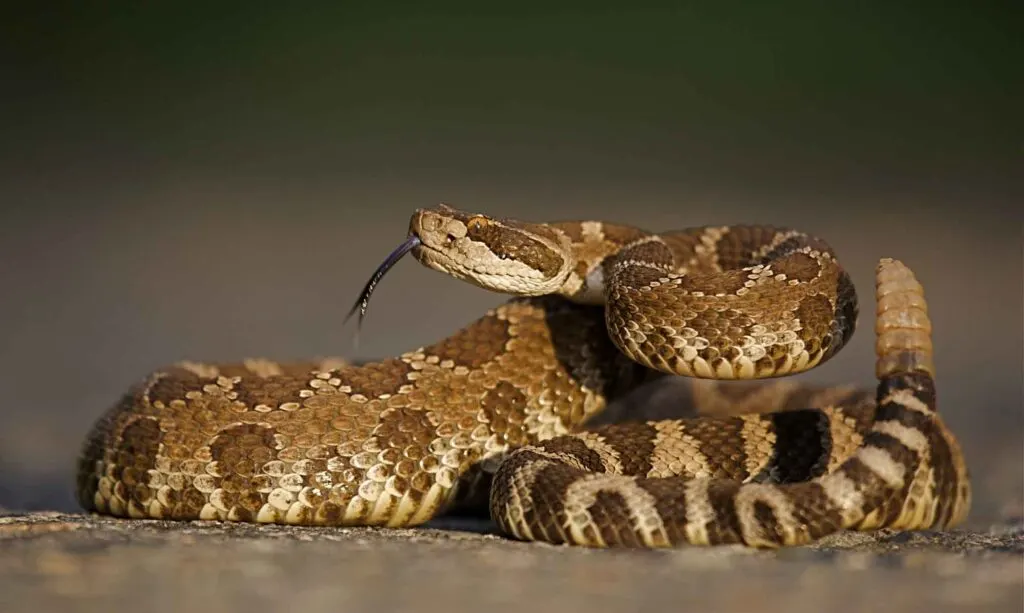
- Western Diamondback rattlesnake speed: 6.59 mph
Third place in the list of the world’s fastest striking snakes belongs to the diamondback rattlesnake, which can strike at a speed of 6.59 mph.
Although these snakes are solitary and take every precaution to avoid confrontation with humans, they frequently bite if humans violate their territory.
Diamondback rattlesnakes are the second-longest venomous snakes in North America.
When these two-foot-long rattlesnakes are born, they have hefty bodies. Diamondback rattlesnakes typically grow to a length of 4 feet, although rarely, they can grow to 5 or 6 feet.
The record-breaking length was 7 feet long. They weigh three to six pounds on average.
Cottonmouth Viper (Agkistrodon piscivorus)
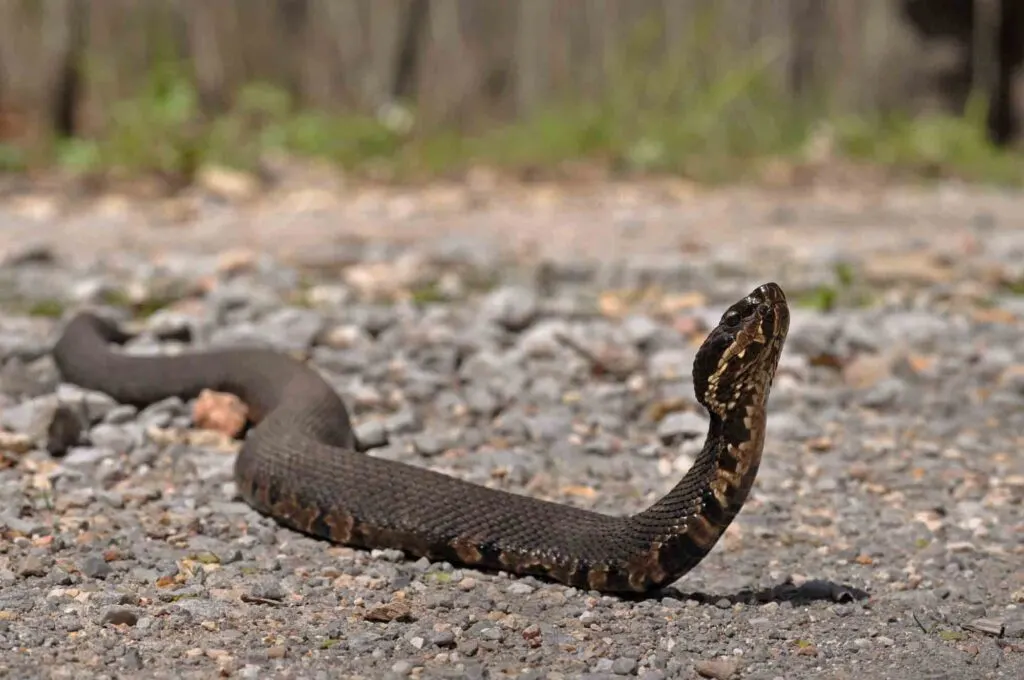
- Cottonmouth viper speed: 6.66 mph
The cottonmouth vipers are semi-aquatic snakes that can survive in both freshwater and saltwater.
There are two main species of cottonmouth vipers found across the USA – the northern cottonmouth and the Florida cottonmouth.
Throughout the southeastern United States, cottonmouths may be found all year long in a variety of aquatic environments, river floodplains, cypress swamps, lakes, bays, and marshes.
They can get very aggressive when provoked. Cottonmouth vipers frequently display their fangs and the white of their mouths as a warning before striking.
They can attack at a speed of 6.66 mph which makes them the second-fastest striking snakes in the world.
Common Death Adder (Acanthophis antarcticus) – fastest snake strike in Australia
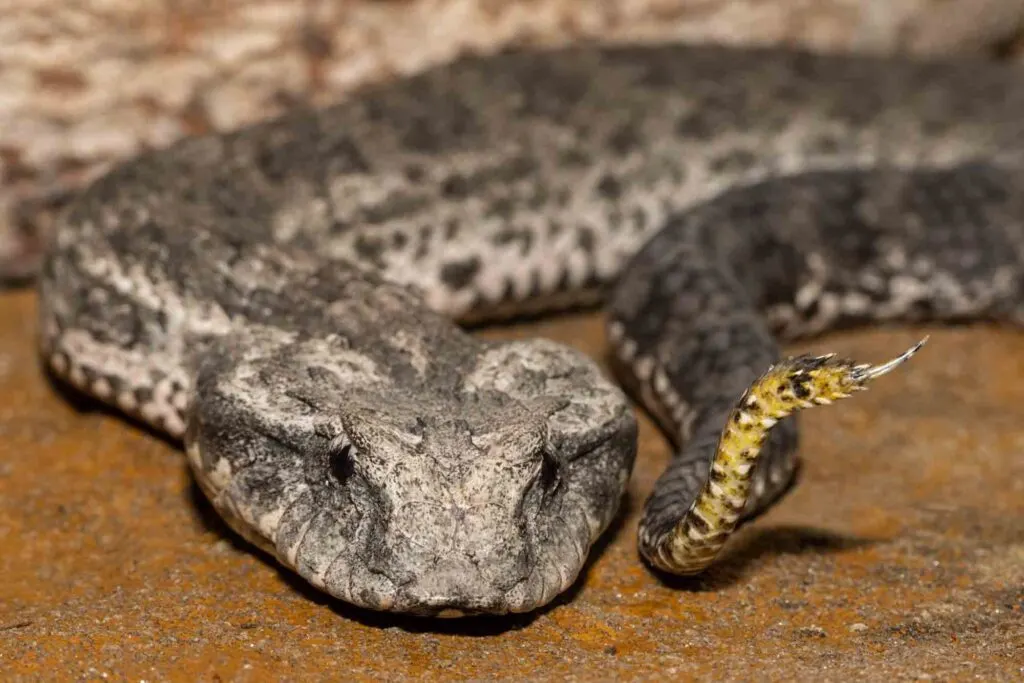
- Common death adder speed: 100 milliseconds
The common death adder is native to the eastern part of Australia and is characterized by an arrow-shaped head and a stocky body.
The narrow tail tip has a brief spine at the end. The back is often distinguished by lighter bands and can range in color from grey to reddish-brown.
Those venomous snakes prefer to live in coastal heaths, woods, and wet and dry eucalyptus forests.
Speed-wise, those fierce snakes can launch an attack in around 100 milliseconds. The death adder, however, is very hesitant to bite people and often only does it in self-defense.
They have the quickest strikes in the world. In only 1/10 of a second, they may attack, bite, inject their toxic venom, and then strike again from a defensive stance.
Gaboon Viper (Bitis gabonica) – fastest snake strike in the world
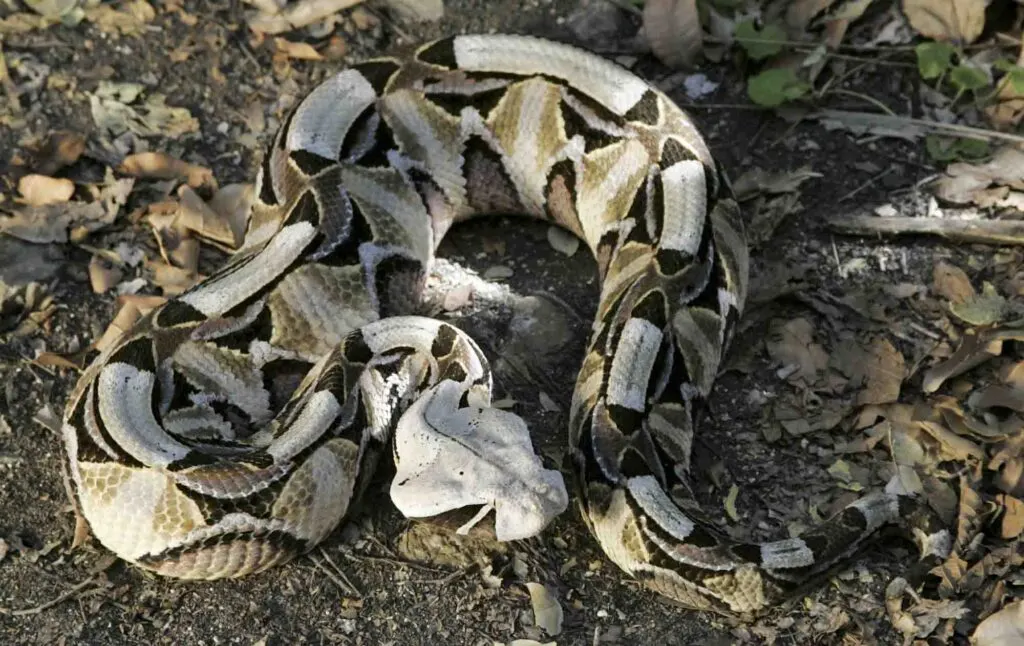
- Gaboon viper: 175 to 200 mph
With the longest fangs of any venomous snake on earth, Gaboon vipers have the largest venom supply of any snake, including the king cobra, which can kill an Indian elephant.
Although these African animals are slow-moving and quite sluggish, they can move their head at between 175 and 200 mph, making them the fastest-striking snakes in the world.
Basically, their strike is fast that you can barely see it happening.
However, Gaboon viper casualties are very low because these snakes are not common and are quite patient, unlike black mambas or puff adders.
Fastest Killing Snakes
King Cobra (Ophiophagus hannah)
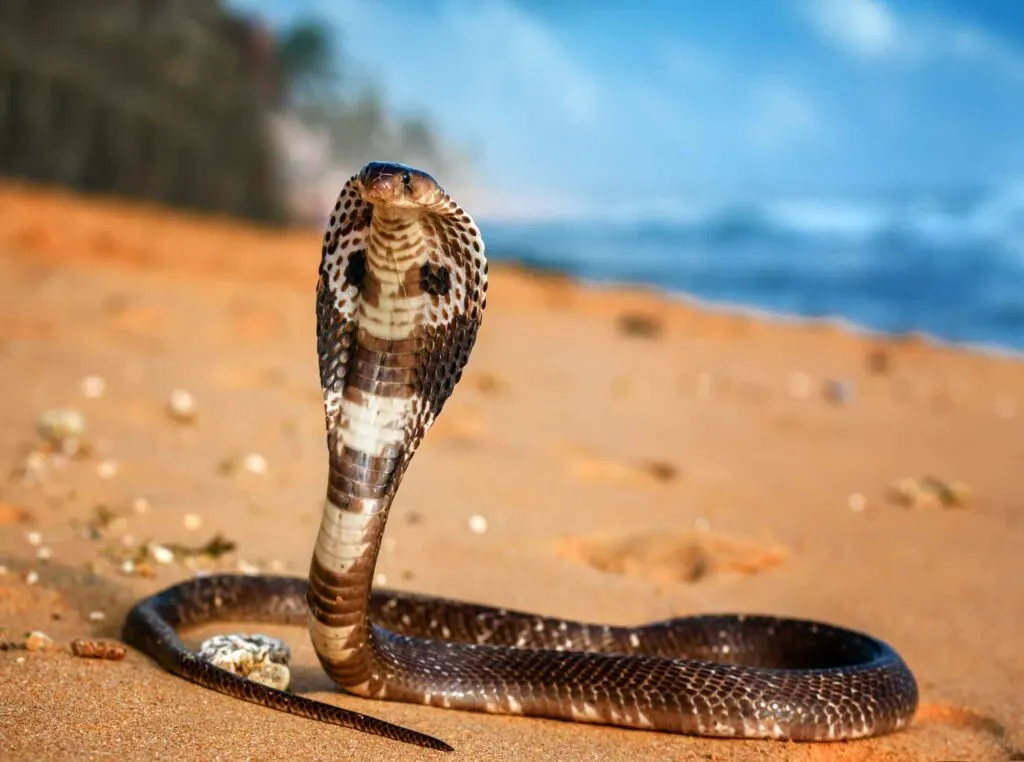
- King cobra killing speed: 30 minutes
The king cobras, some of the deadliest snakes in the world, can be found throughout the Malay Peninsula, in northern India, eastern Indonesia, southern China, and the Philippines.
These vulnerable snakes are typically 10 to 12 feet long, although they may grow to be 18 feet long.
King cobra is considered to be the fastest-killing snake in the world and has the quickest lethality, up to 30 minutes.
The king cobra is a dangerous snake that can suffocate humans very quickly. The high amount of strong neurotoxic venom in king cobras, which prevents the body’s nerves from functioning, is what allows them to kill a human so quickly.
The quantity of neurotoxic they can inject in just one single bite, which is only two-tenths of the fluid, is enough to cause 20 human deaths or even of an elephant (one of the biggest animals in the world), despite the fact that their venom is not the most deadly among venomous snakes.
The respiratory centers in the brain are impacted by king cobra venom, leading to cardiac and respiratory collapse.
What’s The Difference Between Most Poisonous and Most Venomous?
There is a misconception about the terms “poisonous snakes” and “venomous snakes.”
Snakes are not poisonous but venomous. Biologists claim that the term “venomous” refers to creatures that inject their poisons through their bites (or stings), whereas the term “poisonous” refers to species that release their toxins when consumed.
Thus, only a small percentage of snakes are actually poisonous — and you’ll only be affected, in this case, if you eat them. The bulk of a snake’s poisons is spread through a bite.
The garter snake (Thamnophis) is an exception, it brings no harm when biting but is dangerous when consumed because its body absorbs and retains the poisons from its prey, mostly amphibians.
The majority of amphibians, which include toads, frogs, toads, salamanders, and others, are poisonous creatures because they release toxins on their skin or in other organs, such as the highly toxic poison secreted by various poison dart frogs.

Barry Minnich
Monday 22nd of May 2023
I found this article very informative. I think these reptiles are fun to watch. The way the author wrote this article and with all the research involved made it very interesting.
Cindy Barnett
Friday 4th of November 2022
Why wasn't the gaboon viper mentioned? I'm sure his strike is very fast and it kills quick!
Laura
Monday 26th of June 2023
@Cindy Barnett,
It is mentioned. Maybe your article didn't load correctly.
Susan Christie
Thursday 23rd of March 2023
@Wildlife Explained, yes I got answer wrong but I was correct Gabon Viper has fastest strike and longest fangs in the world
Wildlife Explained
Friday 4th of November 2022
Hey Cindy, thanks for your comment! That's a great suggestion. How could we have missed it? Maybe because he is too fast ;) jokes apart, the article is updated!
Lexie Gillmore
Saturday 10th of September 2022
Here is the problem with your fastest striking snakes. When describing a snakes strike it is on reality how much of its body is used when attacking and if you have ever watched a king cobra striking it does not use very much of its body. If you compare that to a rattlesnake which is also considered a slow striking snake you can see that the rattlesnake uses much more of its body when attacking, it's just not the speed but how much of the snakes body is used.
Joyce Tyler
Monday 25th of July 2022
I am amazed about this report I find it fascinating I love snakes this report broke it down and explained the dangers of the viper I do not want to face one of them because I would panic in the more you panic the fast through the venom gets to you